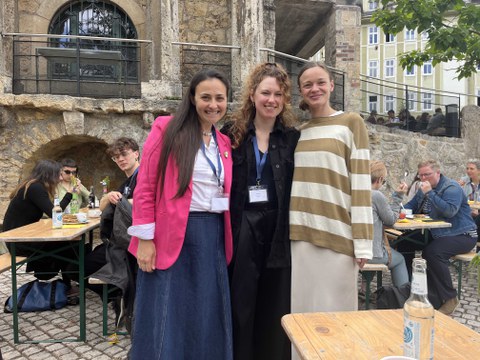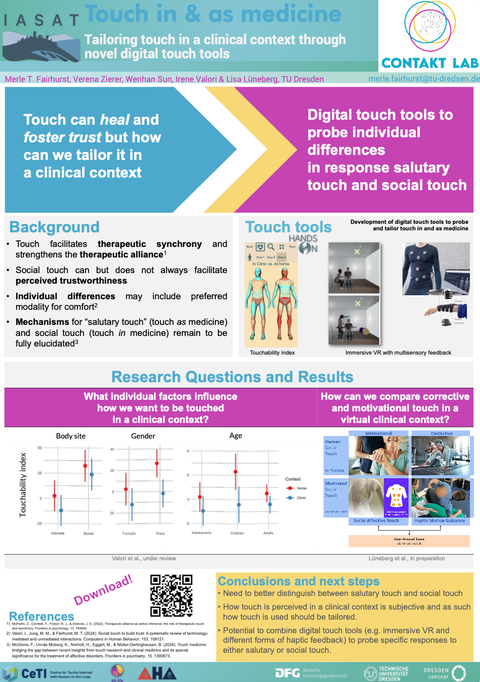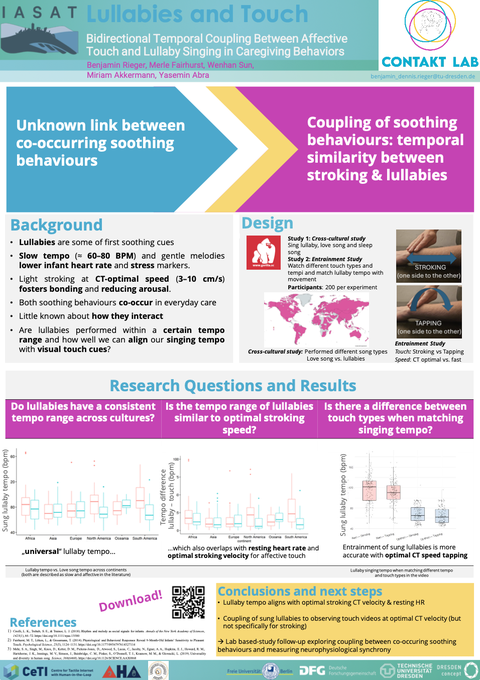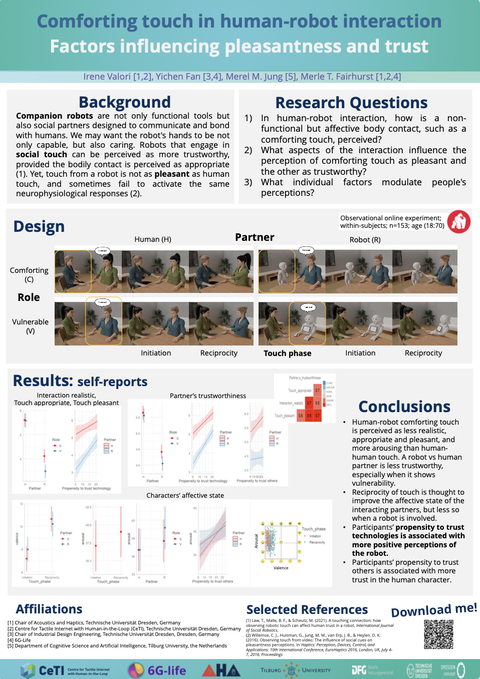ConTakt Lab at IASAT 2025
Last week, ConTakt Lab Professor Dr. Merle Fairhurst, along with team members Irene Valori, Louise Staring and Benjamin Dennis Rieger, attended the inaugural IASAT (International Association for the Study of Affective Touch) conference in Jena, Germany. The city, centrally located in Thuringia and steeped in a rich tradition of poets and scholars, was a fitting backdrop for this gathering of researchers exploring the science of touch.
From the moment of arrival, it was evident that the conference venue was chosen not just for convenience but also to evoke a sense of reverence. The Normannenhaus, a historic seat of a student gymnastics association, stood proudly atop a hill with its striking Neo-Romanesque architecture, setting an almost ceremonial tone for the event.
The IASAT program was structured around three core formats: keynote lectures, symposia, and poster presentations, with ample space for networking over coffee and lunch.
Monday began with a keynote from Patrick Haggard, who shared his research on self-touch using haptic robots and their role in fostering self-awareness through the integration of motor and tactile signals. The first symposium followed, offering multiple perspectives on how the brain modulates and interprets affective touch—whether self-generated or experienced vicariously—through sensorimotor and neurophysiological processes. The day concluded with the first poster session, featuring topics ranging from therapeutic touch in medicine and tactile perception to touch as a communicative tool in emotional well-being.
Tuesday opened with a keynote by Zhou-Feng Chen, who presented groundbreaking findings on the molecular mechanisms of affective touch. Talks throughout the day explored the role of touch as a social signal and even its influence on gut microbiome diversity. The second symposium focused on the stress-buffering effects of social touch and its underlying neurocognitive processes. One of the more creative moments came with an artist’s performative interpretation of touch as a medium for human reconnection. The day continued with another hearty lunch (notably soup and salad-heavy).
Later, Uta Sailer delivered a keynote that offered theoretical frameworks for understanding touch as a signaling system within human interactions. One highlight was a talk by a Nature editor, who walked the audience through the publishing process and best practices for submission.
That afternoon, our lab had the opportunity to present our own research during the poster session. Topics included:
-
Touch in medical contexts
-
The development of touch in early life
-
Temporal coupling of caregiving behaviors
-
Neurophysiological markers of social connection in virtual touch environments
The day ended with a lively BBQ and DJ, festivities that moved indoors after a brief but dramatic interruption by thunder and rain.
Wednesday, the final day, had a tighter schedule with a strong focus on touch technologies. Highlights included a keynote by Yoel Fink on fiber-based computers, and presentations from Irene Valori and Gijs Huisman on pseudo-haptic interactions and the ambitions and hurdles of digital touch. The conference concluded with a rapid-fire data blitz, poster awards, and final reflections underscoring the untapped potential of this growing field.
The team left Jena feeling both accomplished and inspired, grateful for the diverse projects and perspectives shared by colleagues. Also, secretly hoping the next IASAT meeting takes place in Sicily.
There were two key takeaways:
-
Given the contextual nature of social touch, one of the central challenges for medical applications is developing a diagnostic protocol that enables healthcare professionals to systematically adapt to individual patients’ needs and boundaries—minimizing discomfort during necessary physical contact.
-
As haptic robots and virtual touch technologies become more integrated into daily life, we bear an ethical responsibility to ensure their development aligns with established ethical frameworks. These technologies should be designed with ethical considerations from the outset, not justified after the fact. Their potential for misuse must be proactively addressed as part of responsible innovation.
Click the links below to download our posters:
Merle Fairhurst: Touch in and as medicine



